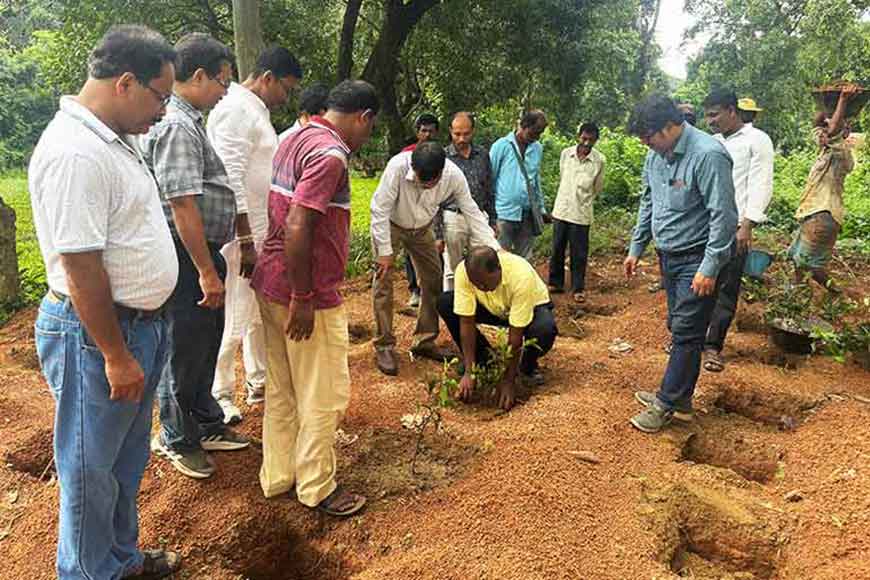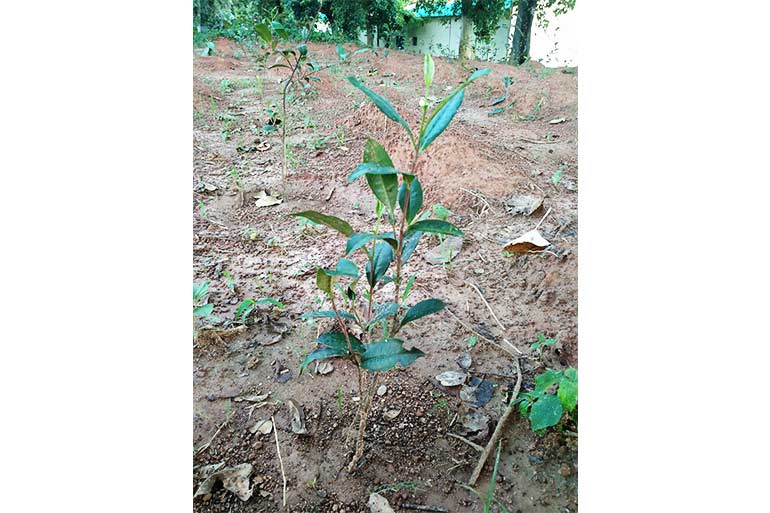Can tea grow in Birbhum? A revolutionary attempt in the land of Tagore— GetBengal story

Birbhum, the land of red soil, has long been known as Rabindranath Tagore’s workplace, Tarashankar’s birthplace, the Kopai River, Sonajhuri Haat, Shantiniketan, Tarapith, and Kankalitala—but now a remarkable new chapter is being added to this legacy, as tea cultivation has recently begun in Sriniketan, an initiative undertaken by the Department of Plant Pathology at Palli Shiksha Bhavana, Visva-Bharati.
Professor Bholanath Mondal of the Department of Plant Pathology is one of the key minds behind this unique initiative. How did the idea of growing tea in red soil come about? Professor Mondal said, “Several portions of the university’s agricultural farm were lying fallow. Near the pond, there were unused patches of land covered with big trees and weeds. We thought of utilizing those areas. Since the land is sloped—with farmland on one side and the pond on the other—it seemed suitable for tea cultivation. Of course, the climate here is different. But then I recalled how Bidhan Chandra Krishi Viswavidyalaya had experimented with tea cultivation in Gayeshpur, and even IIT Kharagpur had once tried growing tea. Though those plantations didn’t last due to a lack of proper care, they did prove it was possible. From that thought, the idea of making use of our fallow land for tea cultivation was born.”
Also read : Wow! Darjeeling’s Green and White Tea get GI tag
From the conversation with Professor Mondal, it was learned that the Siliguri Terai Educational Society is extending its support to this initiative. The organization has provided the tea saplings, which were planted about a month ago. The plants have already started sprouting fresh leaves, marking a promising start. Interestingly, four different varieties of tea have been introduced in Sriniketan’s red soil—Tinali, TB-9, 23-24, and 25-26—making this experiment even more distinctive.

The biggest challenge is to keep the saplings alive. As per the professor, “The land chosen for tea cultivation is barren, with hard laterite soil. In Bengal, tea is generally grown in Darjeeling and in the Jalpaiguri–Cooch Behar belt, where the soil is rich in organic matter. Here, the red laterite soil has very little, so we will have to add it separately. That’s one challenge. The second challenge is temperature. The climate here is extreme, like severe cold in winter and scorching heat in summer. In summer, the hot, dry winds create further problems, as the air loses moisture rapidly. Compared to traditional tea-growing regions, our rainfall here is also much less. To tackle this, we are planning different irrigation methods to keep the plants alive.”
Professor Mondal further shared that the students are quite excited and enthusiastic about this tea cultivation project. If the experiment proves successful, it could open the door to detailed research on tea plants, their diseases, and pest infestations right here in Sriniketan. Among the farmers and local people too, there is a sense of happiness and anticipation around the initiative. Speaking about future plans, he said, “This can eventually develop into a form of agro-tourism. In North Bengal, we see how tea gardens have set up small cottages to attract tourists. The same model can be replicated here. Barren land could be transformed into thriving tea gardens, serving both as a site for research and as a destination for visitors.”
Undoubtedly, if this experimental tea cultivation succeeds, it will be nothing short of revolutionary. Agro-tourism will open up new avenues of income, while tea-based studies and research will discover fresh horizons. Above all, Birbhum’s tourism map will proudly gain a new feather in its cap.
Note:
Translated by Sabana Yasmin
To read the original Bengali article, click here:











